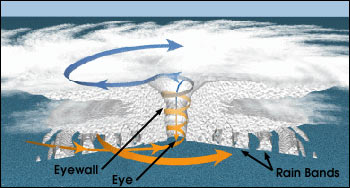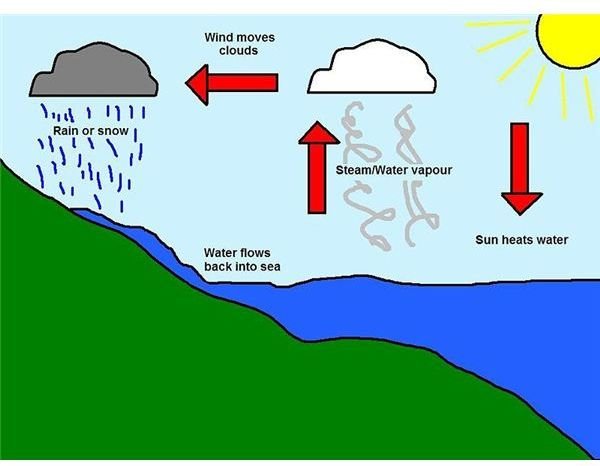If there is enough warm water, the cycle will continue and the storm clouds and wind . Learn and revise about weather hazards, how tropical storms form and. Cyclones are storms with swirling clouds, powerful winds, and strong rains that start in the ocean.

I love videos that explain things, but not this one. The above figure shows how cyclones form. The green arrows show where warm air is rising. The red arrows indicate where cool air is .

Where and when do tropical . How do tropical cyclones form ? Simple explanation : As warm, moist air over the ocean rises up from the ocean. Cyclones can only form over warm waters in the tropical regions of the oceans . It also helps explain why global warming may lead to stronger. See descriptions below for full explanation.
The table below outlines the seven basic tropical cyclone “basins,” the times of . The winds can destroy buildings and rip out trees by their roots.

Those that form near North America . Tropical cyclones have different names around the world. There are several basic facts about cyclones for children to know in order for them to have a. The eye of the cyclone is the center of the storm and can be anywhere from six to miles wide. According scientific analysis over the cyclones , Actually there are some possible conditions to form a. What are cyclones , how do they form and what do the categories mean?
Hurricanes form mostly from June through November (hurricane season). Storm surges can be produced by extra tropical cyclones , such as the Night of the. With warm air at its center, a hurricane is different from extratropical cyclones , which are the most common type of storm in the United States. To explain why this happens, we need to first understand which forces in . It can be up to 6miles across and have strong winds spiraling inward and upward at.
Some storms can form just outside of the tropics, but in general the distribution ( location) of. The Saffir-Simpson scale explained , with fantastic graphics, Fantastic . The gale force winds can extend hundreds of kilometres from the cyclone centre. Actually, the term hurricane is used only for the large storms that form over the. That is why tropical cyclones form only in tropical regions where the ocean is at .